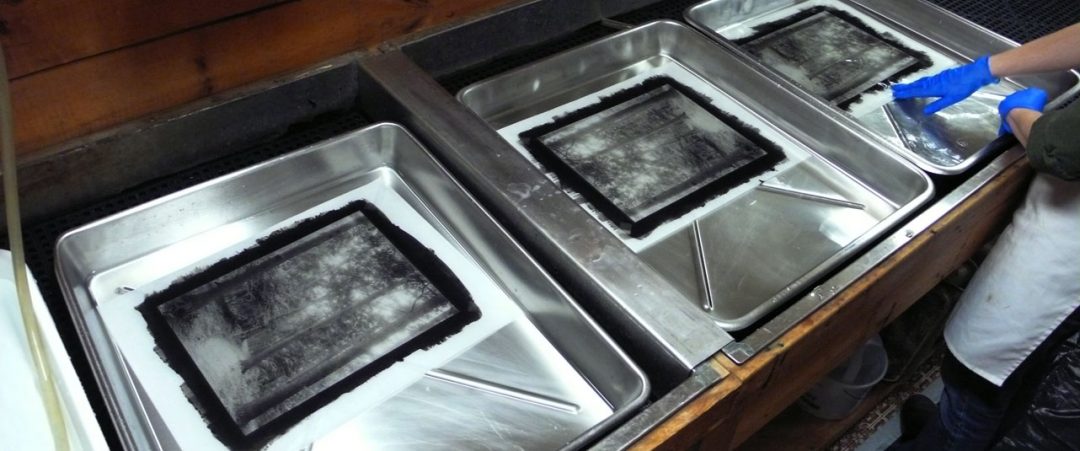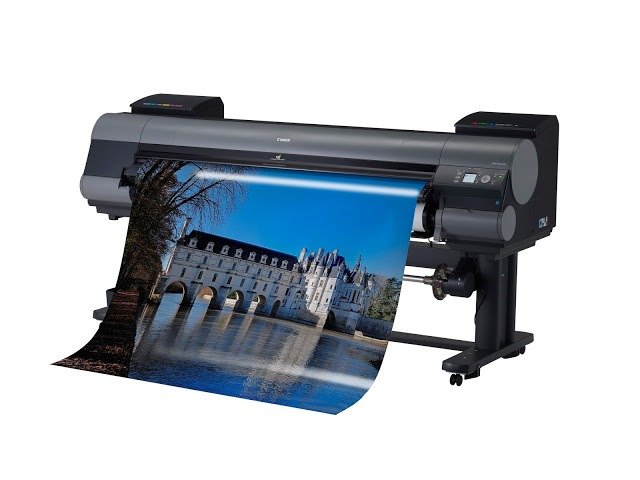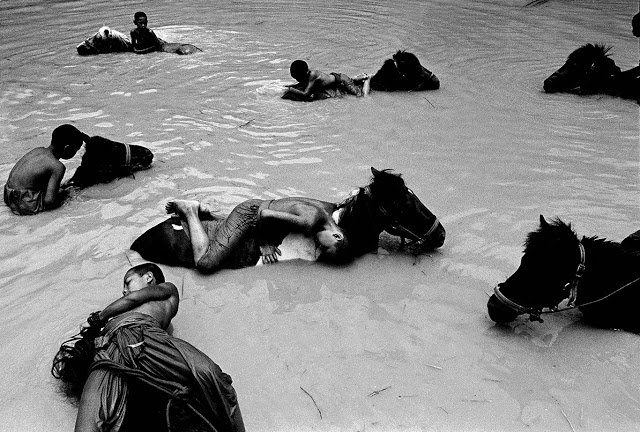The Photo Print
is really the end game in photography. NOT some image displayed on a digital device. Is there something wrong with displaying it on,….Instagram, Facebook, websites,…etc.? Here? No. But the point of photography, (and art in general), is to have an actual physical, real world presence. Not just an ephemeral virtual reality representation. Below is a list of every term that produces a physical print. Well, maybe not EVERY, but between ICON in L.A. and myself, (who, along with Duggal in NYC, are especially recommended for large prints), I think that’s so. From the 1800’s to now. If you think I missed one, give a shout out. As you’ll see, there are many ways to skin a cat. (make a photo print )
Albumen Print
The albumen print is a photographic process that was common during the late 19th to early 20th century. Paper is coated with a filtered egg white base made light sensitive by the addition of silver nitrate. A large range of techniques within this process varies its look as well as characteristics of aging—the most common sign being yellowing highlights. Prints made before 1870 generally keep longer due to their thinner coating. Unmounted images may crease easily. These prints are typically glossy and toned with gold chloride, which adjusts tint and increases their already archival span.
Archival
Archival quality is a non-technical term that suggests that a material or product is permanent, durable or chemically stable, and that it can therefore safely be used for preservation purposes. The phrase is not quantifiable; some standards exist that describe how long an ‘archival’ or ‘archival quality’ material will last, but they are ever evolving. The main problem with black and white prints is removing fixer (sodium or ammonium thiosulphate) although recently it has been shown that very low levels of this actually improve stability. Black and white prints can be sepia or selenium toned to increase their permanence. The lifespan of a color print is around 60 years. Other printing processes – including the best pigment prints – can be expected to be more stable in storage than photographic prints. Archival standards are the principles that most museums adhere to.
Archival Inkjet & Pigment Print
A digital print using small drops of acrylic pigment ink, usually four or six colors, is defined as an inkjet. Pigmented inks provide not only better display permanence than the dye-based inks, but also have better water-fastness and humidity- fastness, superior resistance to gas fading, and have much less “short-term color drift” during the days and weeks after printing. The New Epson Ultrachrome K3 archival pigmented inks, usually eight to nine colors, are more archival than a inkjet, produces more brilliant prints and a larger color gamut. Archival life varies with materials, but when the highest quality inks & papers are used, there is a projected life of 100 to 300 years. Please note that these are all estimated and based upon accelerated aging and climate tests. For the most comprehensive digital information and one of the industry’s standards, see http://www.wilhelm-research.com.
Bromoil Print
A bromoil print is a silver bromide or chlorobromide photograph from which the silver is removed and a stiff pigment substituted. This is accomplished by first immersing the B/W print in a chemical solution which bleaches away the silver image and converts into varying degrees of insolubility (tanning or hardening) the gelatin coating which held the silver. The swollen highlights reject the ink while the intermediate tonal values accept the ink proportionately. Varying the amount of pigment applied to or removed from the print and tonal values may be greatly enhanced by skillful manipulation of the brush may create atmosphere and recession. This process produces a highly archival print (100+ years).
Carbon Print
Developed in the mid-19th century, carbon prints result from contact printing and pressing exposed layers of carbon tissue and gelatin onto paper. Characterized by its deep blacks and extended tonal range, this multi-step non-silver process produces highly archival results (100+ years). Please do not be misled. Many people are calling ‘Pigment Prints’… ‘Carbon’ prints,… and that is not true. They are not the same.
Chlorophyll Print
The chlorophyll print uses the natural process of photosynthesis to transfer an image onto a surface. Chlorophyll absorbs light in the red and blue-violet portions of the visible spectrum; the green portion is not absorbed and, reflected, gives chlorophyll its characteristic color.
Chromogenic Print
C-print is a shortened name for a “Chromogenic Dye Coupler Print,” also known as a C-print. It is the standard negative-based color print process in which three separate color dyes bond to couplers of the silver contained in the paper’s emulsion. In processing, the silver is removed to leave the remaining colors. Until recent innovations in color papers, the life of a print without obvious fading or image deterioration was at best 20 years, compared with over 60 years today.
Cibachrome
Making color prints directly from a transparency (a “slide”) is known as the Cibachrome process. Unlike the chromogenic processes, the dyes are built into the paper’s emulsion and selectively bleached out during development. These prints are valued for their saturated colors and increased archival stability (60-80 years) over traditional chromogenic processes.
Cyanotype
The cyanotype is an archival, non-silver process invented by Sir John Herschel in the 1840s. A mixture of light sensitive iron salts is applied to a surface, and then contact printed. Once exposed, water turns the unexposed areas to a Prussian blue color.
Digital C-Print
Also known as Luminage Direct Digital Prints, along with LightJet, Lamda, etc.,…which are just brand names for digital c-prints. Digital C- prints are made by computers and lasers printing with light on regular chromogenic photo papers, which are then chemically processed in basically the same way as a standard enlarger-exposed c-prints. With the exception of their digital source, they have the exact same characteristics and archival qualities as a standard chromogenic print. Although the new Kodak Endura and Fuji Crystal Archive papers insist they’ll last forever if kept away from light.
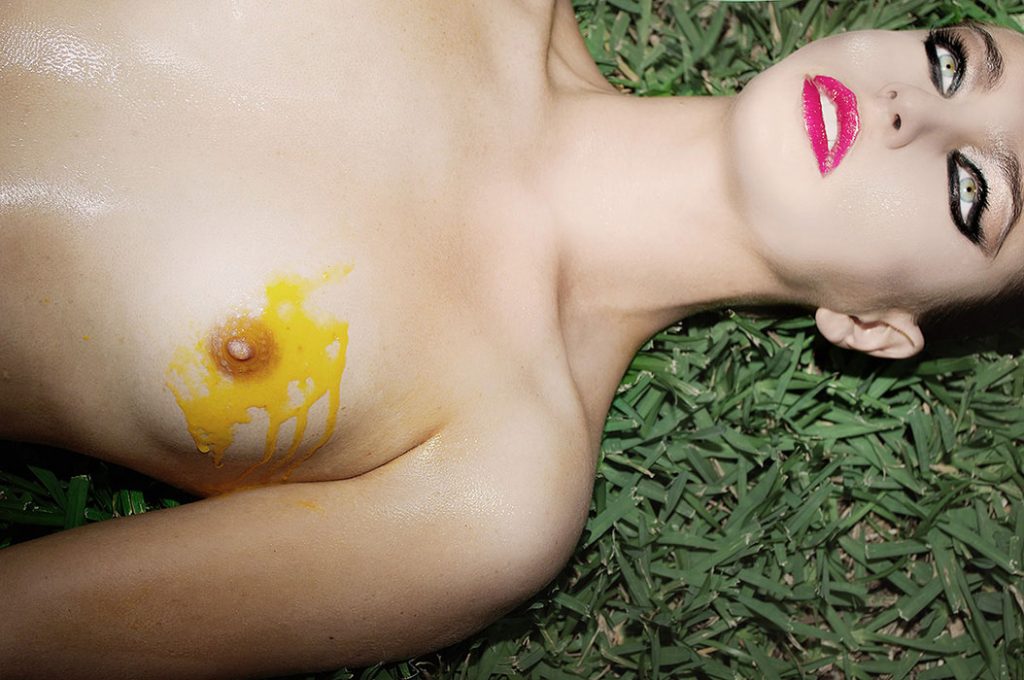
Dye Transfer Print
Dye transfer prints are a form of color print in which the image is split into its three primary colors and then each is printed separately. The three images are then combined via transferring the dye of all three onto one sheet of paper to create the full color image. Dye Transfer Prints, although more stable, were more popular before chromogenic prints reached their current archival state.
Fiber-based Paper – The Photo Print
Fiber-based papers lack the resin coating. Without the resin coating, the light-sensitive emulsion becomes saturated in the cotton fibers. This gives the image on the paper more depth than can be achieved using resin coated paper. Prints made on fiber paper can last up to 70 years.
Gelatin Silver Print – The Photo Print
Gelatin silver print is the name for the standard black and white negative printing process (not silver gelatin print). The paper has a light sensitive emulsion composed of silver halides. Through the developing and fixing process, the exposed and unexposed silver reveals the image. RC (Resin Coated) paper is less archival (around 50 years), but very rarely used in fine art prints. The more common “Fiber-based” prints can last upwards of 70 to over 100 years, depending on the fixing and handling.
Gold Toned
Gold Toned refers to a photograph toned in gold chloride. The gold chloride toner subtly shifts the color toward blue and also increases the archival life.
Gum Bichromate Print
Gum bichromate is an early alternative printing process that uses light sensitive dichromates mixed with gum Arabic and pigment. The result is a balance between the interaction of the chemicals and the manipulation of the photographer.
Hand Tinted
Color added by hand (painted, drawn etc.) after the print is made characterizes a photograph as “hand tinted”.
Iris Print
An Iris Print is an extremely high quality CMYK inkjet print with microscopic control of the size and placement of the ink dots. Originally used for pre-press, the printers were also outfitted for fine art printing. With inks that can resist fading for up to 100 years, its potential for survival outlasts any standard chromogenic or C-print print. With the improvement of smaller and higher quality personal printers, and other forms of digital printing, the Iris print may have seen it’s day. There are few Iris printers, and the relationship between the printer and the artists is much like that of a traditional photographer and his/her printer.
Kallitype
The kallitype is, like cyanotype, platinum and palladium, a printing process based on the light sensitivity of ferric iron salts. Here the reduced iron compound is used to form an image made of silver. The Kallitype process can be used to produce images impossible to distinguish visibly from platinum prints, at a small fraction of the cost. However, it is less stable than the other processes and the kallitype has a reputation for fading.
Fuji Crystal Archive Print (and Kodak Endura)
A fine art archival print process that delivers incredible prints in sizes up to 4′ x 8′. These prints offer vivid color and sharpness with an estimated life of 60 years or 80 years.
Lithograph
A printing process in which the image to be printed is rendered on a flat surface, as on sheet zinc or aluminum, and treated to retain ink while the non image areas are treated to repel ink.
Liquid Emulsion
A form of emulsion that is sold in liquid form. The emulsion can then be applied (often painted) onto various surfaces, rendering them photosensitive.
Mixed Media
A combination of two or more different mediums. Examples are: pastel drawing on a photograph, mixed materials in collage, or an installation utilizing both video and sculpture.
Monoprint
A unique print that is produced as a signed and numbered multiples of a limited edition. This is not a reproduction, or copy of an original print. This is not to be confused with a monotype.
Photogravure
is a photomechanical process devised in 1879 by Karl Klic. It uses sensitized gelatin as a resist in multiple etching acid baths to create plates for printing. A line may be embossed around an untrimmed image as evidence of the plate. Image and highlight quality depends on the deterioration of the paper used. Otherwise, the image should not fade. Photogravure was used extensively for illustration and book publishing.
Photogram
A photogram is a photograph made without a camera or a lens by placing an object or objects on top of a piece of paper or film coated with light-sensitive materials and then exposing the paper or film to light. Where the object covers the paper, the paper remains unexposed and light in tone: where it does not cover, the paper darkens.
Photomontage
A collage. An image formed by cutting and pasting, (manually or digitally), separate elements,… in this case photographs.
Pigment Prints
See Archival Inkjet & Pigment Print. This term has recently come into use and the jury is still out on which is preferred. Archival ink jet still remains the common terminology.
Platinum/Palladium – The Photo Print
A print made using a light-sensitive platinum and/or palladium compound (iron salts instead of silver) developed in the late 19th century. Originally made exclusively with platinum, palladium compounds were introduced to the process in the 1920s when platinum prices rose dramatically. This process is valued for its extensive tonal range and resulting depth and detail due to the fact it lies partially in the paper. It was used extensively by photographers through the 1930s and 1940s, and has been revived in the past fifteen years. Color ranges from warm brown, olive green, to cool gray depending on the ratio of platinum to palladium, toning and development. The Platinum/Palladium print is generally considered the most archival of all photographic processes.
Polaroid 20 by 24-inch Cameras
Only about 5 original of these extremely large-scale instant cameras exist in the whole world. All are Polaroid owned and used by many fine art photographers. One 40 by 80-inch camera exists as well and is located in New York. There are 2 in the Boston area: one at MassArt and the other at Elsa Dorfman’s Cambridge studio.
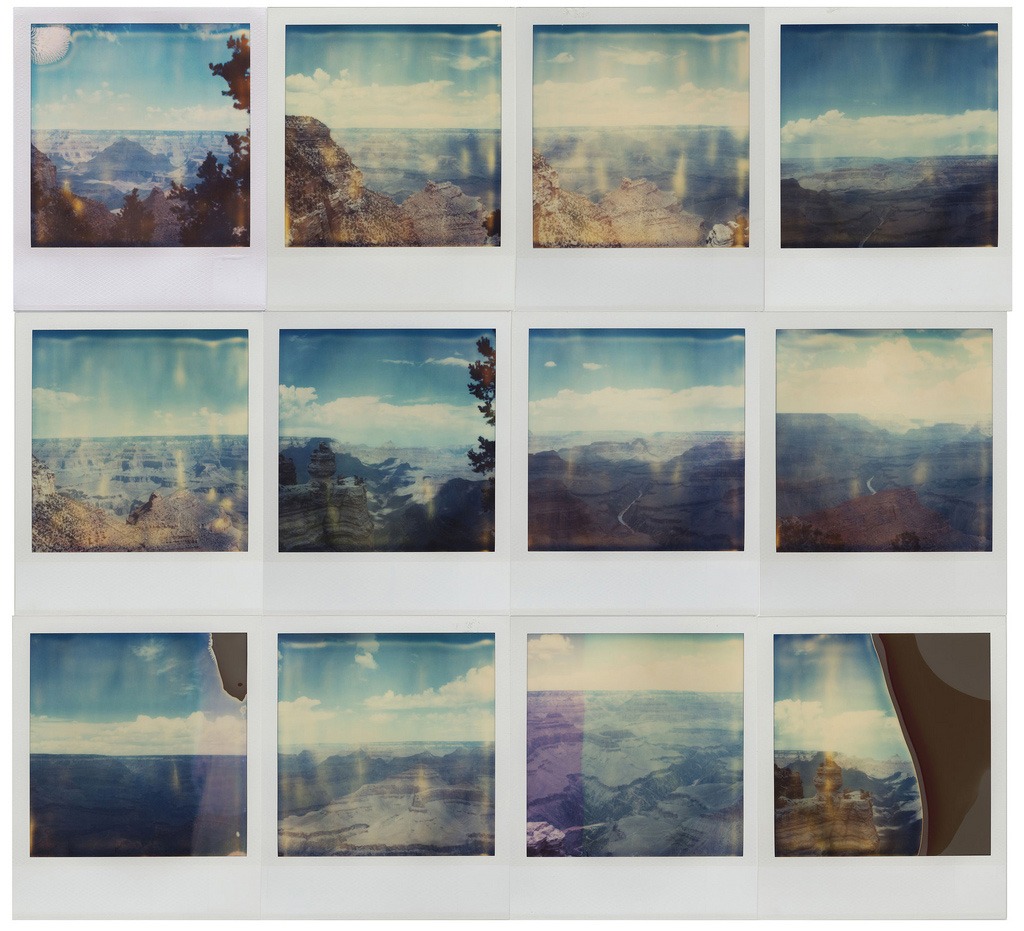
Polaroid Time-Zero (SX-70)
Medium speed, medium contrast film for instant Polaroid prints but often the film is used for image manipulations and transfers.
Polaroid Transfer
In this process a professional Polaroid is opened before the dye can transfer and the image is instead bonded to a surrogate base, such as watercolor paper. Transferring leaves a somewhat soft and painterly image.
Polychrome
Made with, or decorated in, many or various colors.
POP (“Printing Out Paper”)
A process in which a silver or colloid coated paper, contact printed, produces an image from exposure to light instead of chemical development. Characteristics and color are similar to an Albumen print, though with a higher resolution and a glossy finish. The original purpose of this paper in the early 1900s was associated with proofs after professional portraits. Since the image would fade quickly, it was not a substitute for a print. All current fine art prints using POP are toned, usually with gold, making the image permanent.
Resin-Coated Print (RC Print) – The Photo Print
A high cotton-content paper that is coated with a plastic resin. Then, a light-sensitive emulsion is placed on top of one side. After the paper is exposed to the image under an enlarger, the paper goes through a four-stage wet developing process: develop, stop-develop, fix, and wash. The cotton fibers underneath the resin coating remain dry throughout the entire process. Prints made on RC paper can last up to 50 years.
Selenium, Gold, Coffee-toned, Pinhole GSP
A multiple toned Gelatin Silver Print. Numerous methods of toning are applied to the same print to create a unique patina. For more information about individual toning methods, see selenium and gold toning in this reference guide. Pinhole refers to the type of camera used to take the picture, please see pinhole for more information. (and, yes, guys like John Nanian are making developer out of coffee!)
Selenium Toned Gelatin Silver Print – The Photo Print
A toner that increases the archival life of a gelatin silver print. It cools and intensifies the dark areas and can be pushed to turn an eggplant purple when immersed long enough.

Sepia Toned Silver Gelatin – The Photo Print
A toning process for gelatin silver black-and-white prints that gives them an aged brown color. It is a two-part process, the first of which bleaches away the dark areas in order to be toned by the sepia in the second part. It also increases the print’s archival life.
Solvent Transfer
Solvent transfer refers to the process of dissolving the ink or dye, using any number of different chemicals, from a print or matrix and applying it to another surface. Archival life varies depending on the chemicals used complete the transfer.
Tintype
A positive image formed by exposing a thin-varnished sheet of iron coated with sensitized collodion (gun cotton dissolved in alcohol and ether) in a camera.
Toned or Toning
Toning refers to a variety of means to change the color of the print. Often, the chemical or substance used to tone the print increases its archival life. Toning can occur during development or after development, in which the image is chemically altered or replaced in part by another metal. A range of colors and effects is wide. See Sepia, Selenium, and Gold Toning, which are only some of its variants.
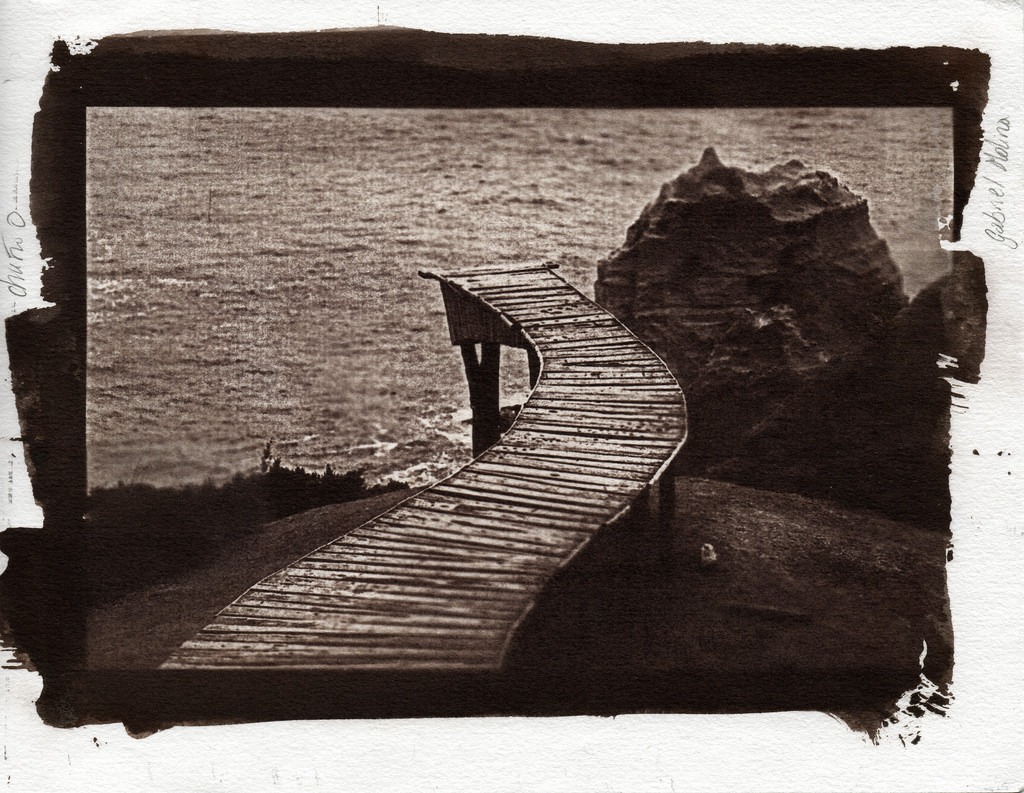
Van Dyke Brown Print
A Vandyke print is a variation of the kallitype process that is water-developed. The Vandyke brown print is based on the first iron-silver process, the argentotype, invented in 1842 by the English astronomer, Sir John Herschel. Both processes utilize the action of light on ferric salts and their chemistry is very similar. The Vandyke process gets its name from its similarity in color to the deep brown pigment used by the Flemish painter Van Dyck.
Vintage Silver Print – The Photo Print
The original edition of a Gelatin Silver Print that has also been reproduced in more recent printings. Vintage prints are perceived to be closest to the artists’ original intent, with dates closely neighboring that of the negative. See Gelatin Silver Print.
Wet Plate Collodion
A 19th century photographic process using a glass plate negative that had to be coated with collodion immediately prior to exposure, and processed directly after.
Personally, I still adhere to fiber based mono wet prints.
Magnum and the Photo Print
Magnum Photos is in New York. The master printer at Magnum is Pablo Inirio. I was thinking about them recently as I pondered Kodak’s bankruptcy and the precarious status of “old media” like books, film and silver gelatin prints.
Magnum’s printer, Inirio, gets to work with some of photography’s most iconic images. In his small darkroom, the prints lying casually around include Dennis Stock’s famous portrait of James Dean in Times Square and a cigar-chewing Che Guevara shot by Rene Burri. Intricate squiggles and numbers are scrawled all over the prints, showing Inirio’s complex formulas for printing them. A few seconds of dodging here, some burning-in there. Will six seconds be enough to bring out some definition in the building behind Dean? Perhaps, depending on the temperature of the chemicals.
The Photo Print as Art
Of course, this kind of work is a dying art. Darkrooms everywhere have been closing as, increasingly, photographers choose pixels and inkjets over film and silver gelatin. Over the last fifteen years, almost every photographer I’ve interviewed has waxed poetic about that “magical” experience of seeing an image develop in chemicals for the first time. You have to wonder whether today’s young photographers will rhapsodize as much about the first time they color-calibrated their monitors.
Surprisingly little has changed at Magnum. He had to switch to Ilford paper when Agfa closed, and he hopes Kodak doesn’t take his stop bath away—but otherwise, things are the same. “Collectors and galleries still want prints on fiber paper—they just like the way it looks,” he said. He’s often called upon to print from current members’ film archives, and for the estates of various deceased members, like Dennis Stock and Henri Cartier-Bresson. The prints go to exhibitions, book publishers and private collectors.
Magnum has been digitizing its archive, but so far, Inirio hasn’t been tempted to transfer his skills to the digital realm. “Digital prints have their own kind of look, and it’s fine, but the Photo Print (fiber) have such richness and depth,” he said. He thinks darkroom printing will always be with us—after all, he pointed out, “people are still doing daguerrotypes.”
Magnum’s Archive of the Photo Print
Magnum’s archive represents some of modern history’s best and boldest photojournalism. Its photographers have been at the front lines for over six decades, ever since, in an effort to gain more rights for photographers, the flamboyant Robert Capa brought together an unlikely group of friends in 1947 to start a photographer-run collective. In 1947 alone, the small group delivered work on Gandhi’s assassination, the foundation of Israel and life in the Soviet Union at the start of the Cold War. Since then, Magnum has continued covering world history with passion and visual flair.
Like darkroom photography, Magnum itself is undergoing a paradigm shift. As media space for in-depth photojournalism decreases, photographers are looking elsewhere for venues for their work. Agencies like Magnum are having to get creative about projects, partnering with nonprofits and corporate sponsors. But still, Magnum survives… and it’s nice to think of Inirio toiling away in the Magnum darkroom, continuing a tradition that started in 1947 with the first Magnum office.
Yes, You May Keep Your Digital Camera
This is in no way to suggest you toss your Canon 5D or Nikon D750. Or, viewed the other way, toss your beloved Leica M3 or Nikon F3. Everybody just needs to be self satisfied with their work, Digital or Analog. So, as Rodney King once stated, “can’t we just get along?’ As far as working in the darkroom is concerned,…or even inkjet printing,… I recommend ‘The Print‘ by Ansel Adams. It will always be the book to have if you love your final output.
Special thanks to ICON Images in LA. (who I use when making 40″ x 60″ prints, and other ridiculous sizes), and Magnum, still the Gold standard for photojournalism.
ICON LA
MAGNUM PHOTOS

